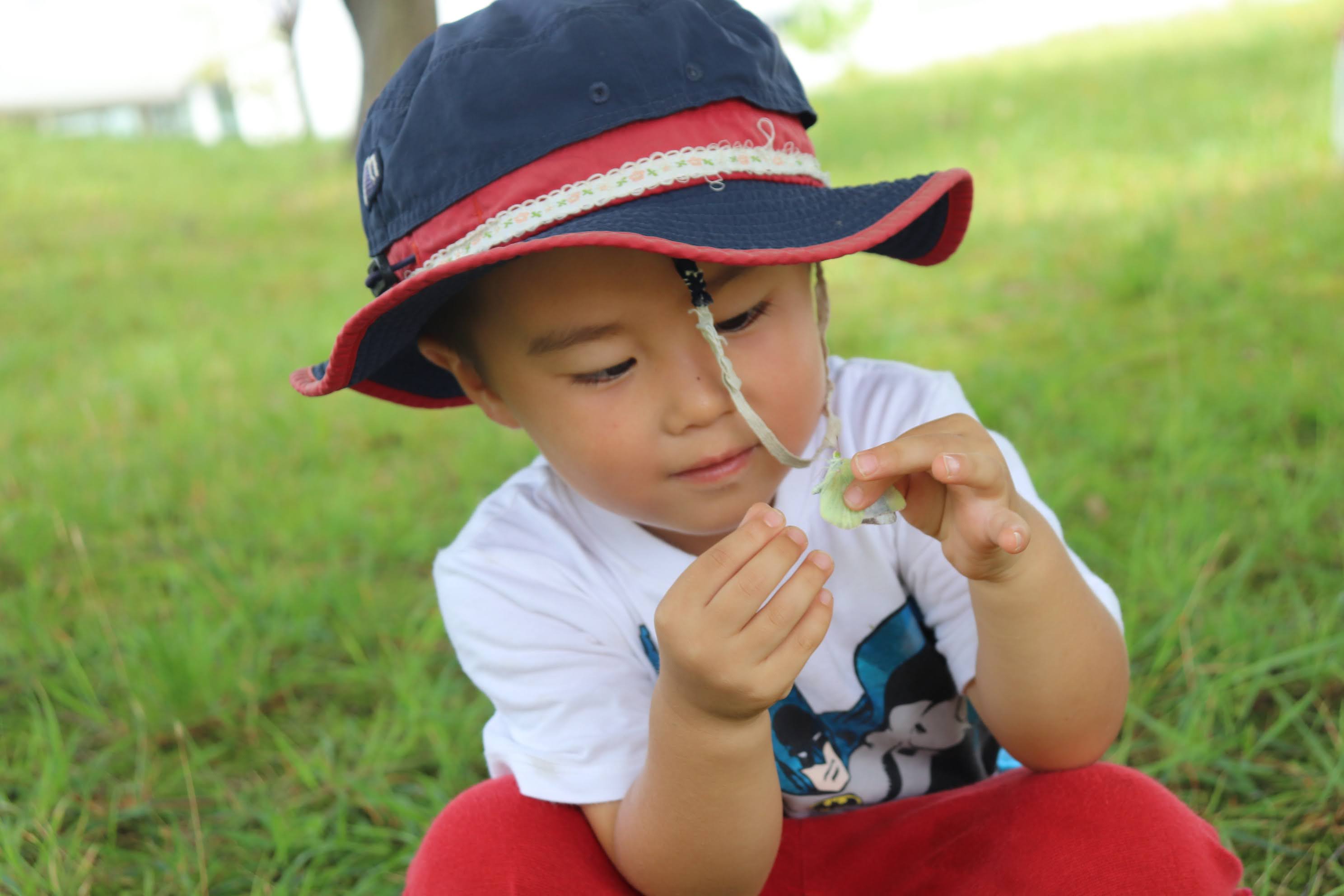
2022.07.28 Relationship with Living Things −Sharing the gaze of parents and caregivers
Text : Asako Sugano
1. Introduction – The impetus for the “Chatting Night: Living Things” project
Children at Yamanoko encounter a variety of living creatures in the garden, in the forest, in the sea, and in other places. In July, when the children’s contact with living things was becoming richer and richer, a question from a parent prompted us to plan a round-table discussion called Chatting Night: Living Things. With her permission, we share the content of her question.
When I went to pick my kids up, I found two dead crayfish on top of the shoe box.
We may have talked about the insects placed in a similar situation… I would like my kids and their friends to think a little more about ‘life’ and that they are living just like us, little by little. It saddens me when I see them dead and left to die.”
For children, daily contact with familiar insects, frogs, crayfish, and other living creatures is a continuous encounter with life and death. Watching these children, I strongly feel that they are in the midst of the original experience that will become the basis of their sense of values. We wonder what kind of attitude we should adopt. Both parents and caregivers shared their concerns, and even though there were no answers, we were able to learn deeply from each other‘s perspectives. We would like to express our gratitude again to those who participated, and hope that we can look back at the children’s subsequent growth, the struggles and reflections of the caregivers, and other issues at this time of the year as we approach winter, and use the occasion to trigger renewed discussion.
2. Yamanoko Chatting Night Transcript (some parts omitted)
Date & Time: Friday, July 1, 2022, 19:00-20:00
Location: Yamanoko Nursery School & online zoom hybrid
Participants: Parents (6) and caregivers (3) of Yamanoko Nursery School and Yamanoko Nursery School Home
(~Introduction/Greetings omitted~)
2-1. Introduction of living things currently keeping at Yamanoko
Moderator Chihiro: We will first talk about the recent situation of living things in Yamanoko, and then we will talk about what we are currently wondering about, including episodes of our involvement with children. Eventually, we would like to ask questions and receive comments from parents.
Caretaker Asako:I would like to introduce some of the creatures that are currently living at Yamanoko. This is a tank with 12 crayfish. The size of the case is about 50cm x 40cm. Until a while ago, we kept them in a smaller case, but crayfish have a tendency to cannibalize each other if two or more are kept together, so we try to keep them in a place as spacious as possible. However, this is still not a large enough space for this number of crayfish, and fights break out daily, and the children arbitrate and observe the fights as they bash their scissors against each other, saying “This one is so big, I think it’s going to eat it”.
As for the killifish and the stones that are in there with the crayfish, children had various suggestions such as “I’m worried the crayfish will eat the killifish, but it’s better to keep them with an air pump. Should we keep them together?” Or, “Would it be better to have stones for the crawfish to hide?” We are making a crayfish tank in this way, while discussing with the children. Their fever is highest right now for crayfish, followed by frogs. We have one large frog we caught just yesterday on forest day. For crayfish and frogs, we try to create a breeding environment that is as close as possible to the environment in which the creatures originally lived, with humus, leaves, tree branches, and water, or with rocks and water plants, while talking with the children.
By the way, this yago(dragonfly nymph) tank, there is mold growing on the Yago… A situation has occurred because of lack of adult supervision and also the children’s interest went to crayfish and they neglected to take care of it. While I was thinking about cleaning this up, one of the children said, “Oh, it’s moldy and fuzzy!”, making me realize that this can even be part of the observation.
2-2. What the caregivers are discussing with each other
Chihiro:Can you tell us how adults at Yamanoko see and relate to what is happening between living creatures and children, and how they feel about it?
Asako:Every day we have discussions. We do not decide to make rules about interacting with living creatures or to talk to children in a certain way. Rather than creating uniform standards, we focus on sharing that we have different values and ethics regarding life and learning from each other’s ideas. Through such dialogue, we discuss daily how to communicate to children and what we want to share and value in common, and we proceed in a way that connects this interaction between adults to children’s relationship with living things.
The key word we come to is that there is no right answer.For example, some people feel sorry for the frogs especially when they die soon after being brought from the forest, and they tell the children that they are treating life too lightly. Some adults say nothing with a will because they think that is the way they play now. There is diversity in the way adults interact.I think it is necessary for adults to talk to each other first, and I feel that we are now in a phase where adults are learning what they value in their relationships with living things, and sharing and deepening that knowledge among themselves through questioning the other person.
2-3. Backgrounds and values towards living things
Chihiro: How do you think your values toward living things were formed in your life? I would like to ask you to talk about it with some background information.
Tsukimi: I have loved animals since I was a child and wanted to live with them, but my family was not very fond of animals, so I spent my life without being able to interact with them. Now that I am independent, I live with a dog and a cat. Although I have always wanted to keep animals, I sometimes find it difficult to do so at the same time. I live with them while thinking about how to take care of and protect their lives every day or what kind of environment is comfortable for them.
When I was a child, I don’t really remember my parents telling me not to kill insects or treat them poorly. One episode that left a strong impression on me was that one day I was interested in what would happen if I tied a worm, so I tried it and observed what happened, and reported my experience to my mother: I tied it once and it unraveled immediately, twice and it took a little longer to unravel, and three times and it broke. For some reason, I remember very well that my mother accepted it without any exaggerated reaction, saying, “I see”.
My first encounter with death was in the second grade, when my hamster died. Although I was the one who wanted to keep it, I only took care of it when I played with it. I never fed it, cleaned its toilet, or checked its daily health. When it died and I cried a lot because it was a short-lived creature, my mother told me, “You have no right to cry, you didn’t take care of it,” and I thought she was right. I thought that was the moment when it became clear to me for the first time that life really needs to be taken care of.
After that, I became more involved with living things. In my previous job, I worked with about seven horses, taking care of their nails, checking for plucked hair, bugs, and other daily checks and care, and watching how well they ate and pooped.
Asako: I have never had a pet in my life. I grew up in an urban center where nature was not so abundant and creatures were not so close to me. I grew up with almost no experience of playing with soil and touching insects. It was at my previous job that I had my first experience of interacting with living creatures on a daily basis. I remember thinking, “Those crabs look exactly alike in color and shape, but they are actually completely different crabs!” or “This fish doesn’t swim, it crawls on the ground! Interesting!” I never knew the joy of being involved with living things until I became an adult. So when I see the children in Yamanoko, I always think how fun it would be to see so many different creatures in nature and to be able to fully interact with them from childhood! I envy them a lot. I wish I could have been involved with such a rich variety of creatures since I was a child!
Since I worked at an aquarium/museum where I conducted many workshops for children to observe living things, I am more interested in what children learn from observing living things than from taking care of them, and I think I tend to give my opinions based on my experiences.
2-4. Changes in the children, and the caregivers’ questions
Chihiro: There is a great variety in the way children are interacting and communicating with living things these days. Can you talk about what changes you have seen in the timeline of May, June, and now, and what you have been struggling with?
Asako: It has only been in the past month or so that the weather has warmed up and our involvement with living things has increased dramatically, the children’s interactions and reactions with the creatures already show a great variety. Not long ago, there were days when they would bring home 10 to 20 small tree frogs, and we lived with dozens of them. Frogs are so fascinating to touch that at first, in early May, the kids basically wanted to hold the frogs they caught all the time, all the time they slept and all the time they ate! I was impressed by the way they held it all the time, wanting to stretch it out and get to know its body, or wanting it to be theirs! Recently, however, when the caregivers started to prepare the case for the frogs and asked them to make a frog house, rather than holding the frog all the time I saw them saying, “Let’s give it back to the house for a while” while closely watching where they hide. I can see a change in the way they are now interested in seeing and knowing the frogs too.
In the past, they were only holding the frogs, but now they want to make a comfortable place for the frogs by themselves. When making a frog house, they say, “Let’s put a tree for the frogs to climb!”, or ” Let’s put some water in it, too, because it might be hot!”
Seeing these children like this, they’ve learned to respect living things in a month! It is not that easy, although it is tempting to rejoice. For example, one day some children took out crawfish and made a waterslide by pouring water with a hose through tubular bamboos they found in the yard and said, “Crawfish waterslide! Wow, it slid! Fast! Fast!” They were playing as if it were a toy, with no sign of feeling sorry for the crayfish or wondering if they would die if they did this. I sometimes feel sorry for those crayfish from an adult’s point of view, but when they say things like “Wow, it( the crayfish)’s not broken yet. ” makes me realize that the expression “not broken yet” rather than dead or alive indicates that the child is aware of the strength of the crayfish shell and how much the crayfish has been able to survive.
After a little while, the children’s play changed, and the crawfish sometimes took turns. Some children would say, “This one is a little weak, let’s give it a rest!” and then they’d slide a little more energetic crayfish. This kind of repetition and playing with them as if they were toys became an exercise in sensing life. I think this is a very real learning experience that can only be done with real living creatures. I try to watch, observe, and record their interactions without interrupting them by saying “Don’t do that, look at the poor crayfish”.
Tsukimi: I, on the contrary, believe that there is such a thing as crayfish ecology, so I am very aware that they are different from toys and different from human beings. I myself feel sad when I see crayfish being treated like toys, so I ask children, “What would happen if ~?” then try to think about it together.
For example, when a child catches a crawfish, I ask him, “What should we do with all the crawfish in this tank? I then ask him again, “There are a lot of crayfish in this tank right now, what should we do with them? Can we keep them together?”
Children listen carefully to what I have to say. I once told them, “A 30cm tank is too small, it says in the book that even two fish will cannibalize each other, so this one might cannibalize this one,” and then the next time children caught them, they said, “This tank is too small, you need a 60cm tank to keep two. “
The other day, I asked, “In what kind of environment do you think the crayfish would be happy?” One child answered, “Maybe like a forest?” In the end, he said that if there was a place like a forest in Yamanoko, the crayfish could live happily. If we could immediately provide such an environment, I think the crawfish would be happy, but we have to go through a process of trial and error. I am interested in how far we can talk with children and create a breeding environment together.
2-5. How can we react when children encounter death
Chihiro: It sounds like what has been said so far is based on the assumption that when a child interacts with a living creature, the creature may die or become weak as a result. I feel that in the general mindset, the thought that life should not be mistreated is often inevitably at work among adults. When a living creature dies as a result, what kind of emotional response do you feel? How do you work with children?
Tsukimi: It’s a very difficult story. As for the crayfish episode, there was a crayfish that failed to molt and was eaten by another individual. The shell was very soft and easy to eat for the other crayfish, and it was eaten and died. At that time, the way the 4-5 year old children touched the dead crayfish was extremely gentle. They were fearful of touching it, or gently placing it down to observe it. On the other hand, the 2-3 year olds were so interested in the fact that the crayfish was dead that they were touching it and tasting the texture itself. However, the child was very interested in the softness and texture of the crawfish’s body. ” I feel conflicted between my feeling of “It’s going to be messed up…” and the child’s curiosity and interest in the deceased individual crayfish that he is encountering right now. I don’t want to take away the moment when the child finds something like that with one word from me. I am very conflicted in these moments. It is a point where I am very torn between how to speak to them or not, and how to watch over them, and my heart is very much in turmoil.
Asako:I think that feeling sorry for the death of a living creature is actually a very sophisticated feeling. When a child unintentionally kills a living creature, I wonder if it is really possible to convey this feeling of loss of a life in words. My reaction to the dead insects at YAMANOKO is rather nonchalant. I even say “Do you want to make a specimen of it?” or “may be a crow will eat it if you put it outside.” I have a strong intuition that the only way to feel sorry for a dead creature is to realize it for yourself, that it is something you learn, not something someone tells you. So what I try to do is, if there is a child who is interested in the fact that a creature has stopped moving, I try to identify the cause of death, wondering what it was. For example, this fish was in the water and then it died. Why is that? It was in the water when we went to the forest. In the case of a situation where the child wonders, “The water that comes out of the faucet actually contains a chemical called chlorine so that people can drink it and play in it. It was different from the water in the forest. ” If you touch a frog all the time and it stops moving, I can say, “Maybe your hands are very hot for frogs.
I try to talk about what I feel and what is happening from a living creature’s point of view, rather than from a human’s point of view. Children are free to decide what they feel there. I have recently been thinking that as they repeatedly and unintentionally kill things, they will each have a moment when they realize that something that was warm just a moment ago has become cold, or that something that was moving just a moment ago has stopped.
2-6. Parents’ Discussion
Chihiro: This Chat Night is a project for everyone, so I would like to invite all the parents to talk about what you just heard, how you feel about this, how you think this is different, etc. I would like to invite all the parents to share their thoughts and opinions with us.
Parent Y: I rarely have to take my kids to Yamanoko, so all I know about the living things here is the stories I hear from my kids that a crawfish cannibalized each other or died today, or that my kid caught some insects. so I participated today imagining the landscape and found the crawfish situation to be more severe than I had imagined.
At home, we have two crawfish and a beetle larva, and we are getting more involved with living creatures. But when I ask, “Aren’t you feeding them today?” my kid says, “I’m tired today, so please do it, Mom and Dad”. Also, he often talks about his possessiveness, or that he wants to show his friends that he caught something. Even if I tell him that it will get all weaker if everyone touches it, he still wants to take it with him.
I was born in Tsuruoka, so I have a lot of experience with insects. I still remember touching insects in nursery school and elementary school, removing only the scissors of shearwings and cutting worms. After that, I never had a chance to be involved with animals, but now that I have my own kids, I have the chance to be involved with living creatures for the first time in a long time.
Parent M.I.: We have beetle larvae and crawfish at home, and my children are currently in a crawfish craze, and I am having a hard time with it. As adults, we know that life is important, but it is very difficult to communicate this to children.
When we see an illustration of a shrimp in the seafood section of the supermarket, I think to myself, “Oh! Crayfish! The children were delighted to see a shrimp in the illustration in the seafood section of the supermarket, but it is very difficult to draw a line between crustaceans as food and the same kind of creatures they found, what is allowed to eat, what is allowed to kill, what is not allowed to kill while being kept, and what is allowed to kill if it is for the purpose of eating. It is very difficult to draw such a line, and I feel that it cannot be expressed in words.
One thing that I think about is whether or not there are feelings or attachments. I know this is just my ego, and it is just my own thoughts, but when I am the main person in charge of taking crawfish home and taking care of them, I cannot ignore the relationship between me and the crawfish, and I can’t help but feel attached to them. So when the children handle the crawfish too roughly, I feel that they do not have to put up with my feelings so much just because it is for their learning.
But as a way of conveying the message, don’t take life so roughly, I don’t want to scare them away. We are surrounded by an abundance of living creatures and plants, and we cannot live without them, but we must not take care of them! They are inviolable! I am afraid that if I tell my children such messages due to my fear that they would lose their interest in them as if they were not there, even though they are there. Without scaring them, I would say, “There are things like the crayfish’s situation, and I don’t know how to keep it, so let’s look it up on YouTube together! Let’s just ask Dr. Google!” We search for a comfortable environment for the crawfish together.
As for the difference between Yamanoko and a home, in terms of environment, since Yamanoko is a public place, even if the crawfish are caught by the children themselves, they may feel that they belong to everyone and the responsibility for them may be divided. This is the difference between keeping the animals at home and keeping them at Yamanoko, and I thought it might be difficult for the children to be involved.
Chihiro: Thank you for sharing your ideas. We, on the nursery side, have been searching for ways to get involved, preparing books and looking at them with the children in order to create the best possible environment for the creatures. We have also valued the attitude that children will not become serious about living creatures if adults do not first take care of them seriously. The unique characteristics of a nursery, the responsibility and the perspective that living creatures are difficult to own, were something I would not have noticed unless I was told by families and that is so right.
Parent R:I love animals and have lived my life being very involved with them, and now I am in the position of killing and protecting many living creatures in my work. When I first stepped into this field a long time ago, My senior colleague once told me, “If you kill many living creatures as a child, you will be a protector when you grow up.” I think he is right, and my basic premise is that it is very important to be involved with living creatures as a child. So I think that Yamanoko is in a very good environment.
One thing I was wondering about is that I thought that sometimes the caregivers may feel that there are cases where children kill certain living things because of their smell, look, etc. I am concerned about the behavior of children who say, “I hate it, so I step on it”. So, I thought it was a great idea to offer a different point of view. While it is important not to take away their curiosity, children may not be able to imagine what is beyond that. Maybe we should include some “I feel sorry for them” perspective when children harm living things too deliberately.
Today, listening to all the caregivers thinking about how to make things better, I thought it’s going in a very good direction, and I am looking forward to it.
Chihiro: I agree. It was very convincing to see the transition in the last 3 months in the way the children interacted with other animals, that because they continued to face life, their attitude toward life would change as a result.
Parent M.F.: I felt that my kids have not yet had much to do with insects, so I attended this talk thinking that I would just listen to it. However, I asked my child now, “How would you feel if you killed an insect?” she replied, “I wouldn’t kill it, I feel sorry for it.” I have not taught her anything, and I am pretty much unaware of insects, so I felt that she must have made that comment through seeing and being involved in many different kinds of relationships at Yamanoko.
We had a pet dog that we had owned before my kids were born which passed away a short while ago, and although I did not say anything in particular during the cremation process, I think they learned a lot about life.
My three-year-old daughter recently learned that there are two ways to say good-bye: “good-bye” to a pet dog means that it has gone into the sky, and a good-bye to S-chan, who moved a little while ago. She once asked me “S-chan is dead? Is he going to the sky?” I told her that our dog passed away, but S-chan is moving and will be just fine in a different place. I am sure that she naturally feels that the dog is not here anymore because it is simply not there and that S-chan lives somewhere else but he should be fine.
I am grateful every day to Yamanoko for the fact that even though I really don’t say anything in particular, my kids are stimulated by these experiences and are learning naturally.
Parent M.K.: We teach pretty straightforwardly about the value of life and the sadness of a creature’s death. When I ask, “How would you feel if Mom and Dad left?” and they answer, “I would be sad if you are gone, no. Lately, my children are always wanting to keep bugs and bring them home and they often put a bug in a basket with nothing in it and say they want to keep it or take it home.
I tell them “well, then, if you want to keep it, you have to prepare its environment properly and make its home a place where the insect can live comfortably.” I often tell them, “If you don’t do that first, I won’t allow it”.
Chihiro: I see. Today, your child made frog houses from scratch with the caregivers, and they were thinking seriously about what kind of environment would be comfortable for frogs to live in.
I think that his involvement at home was connected to his appearance at Yamanoko too.
2-7. Comments and messages from caregivers
Chihiro: Finally, the caregivers will wrap up today’s meeting and how they will relate to children and living things in the future.
Tsukimi: As I listened to the parents talking, I was also reminded of the way children teach each other. For example, a child, who is a dragonfly catcher, would teach a younger one, “If you hold it like this, it will not be able to fly or it will weaken, it will die, so do it like this it will be better” while looking at the details.I felt that the older children must have had their own experiences in the past of holding and crushing those parts or getting stuck, so they are able to teach the better way to their little friends who are trying to do the same thing.
The sense of sharing experience among children is amazing. Although children don’t always follow how they were taught, the experience of being taught and the experience of being stuck by their own involvement would be passed on to the next person as time goes on. Getting to know the various stories today encouraged me to rethink about the topic and the contributions I want to make for the environment at Yamanoko.
Asako: I would like to deepen my understanding of what we can do at Yamanoko. Parent Y said, “The situation is much severer than I imagined,” looking at the crawfish tank, but I expect that the situation will probably be even harsher than this in the coming months. For example, American crayfish, an invasive species, cannot be returned to the pond once caught, so if children catch them and bring back to Yamanoko, the number of crayfish will increase. It would be easy for an adult to suggest, “let’s stop catching crawfish because the tank will be full,” but their desire to catch crayfish is tremendous and is unique to this age group, so we decided we wanted to respect that.
Rather, how about experiencing with the children what it is like to keep crawfish, what it is like to keep a lot of crawfish, and what it is like to be out of control? We also asked the children if they would like to try keeping all the crabs they wanted to take home this summer. We are also discussing the possibility of keeping dozens of them like in a crawfish farm, to see how the children react and what kind of discussions they have with each other. Of course, this is not a decision, but I think it is something that can only be done in a nursery.
Of course, we are facing the question should we keep the crayfish in a cramped environment? But I think it is important for us as a nursery and for me to think together with the children about the questions the adults want to ask in each situation, while living with the creatures in a way that supports the children’s curiosity as much as possible, rather than making decisions based on discussions among adults alone, and I think this is a challenge for us caregivers this summer. It’s hard work, but I am also excited and looking forward to it. I also want to share this with you.
Chihiro: We can’t stop children’s overflowing excitement over living things.
There are times when they end up dying as a result, but I believe that there are things that are acquired as they accumulate. Things like how much force needs to hold without hurting them can only be acquired through accumulated hands-on experience, a lesson that can only be learned not with a toy but with the real thing. It is something that cannot be expressed in words, something that can only be acquired. I believe that there is nothing stronger than something that is acquired.
Of course, adults can support them by telling them what they should do by saying, “We don’t kill living things. We don’t crush them because we feel sorry for them. Be more gentle with your power” , or we can say things like, “Life is important,” but it is something that can be given, and of course it is good to have both giving and acquiring, but there is a sense that what children learn by themselvesis not superior to what we can give.
I think there will come a time when each of them will realize, “I was being so cruel…” The timing is not uniform. and the children’s world is one that moves slowly as they move back and forth in a wavering state of “I want to take good care of it, but I still want to touch it a little. ” Again, it is inevitable for those who are close to children to know this.
3. Consideration – Where do adult conflicts come from?
Children’s curiosity about living things is a tremendous source of energy, and the emotions that arise are diverse: they want to touch them, catch them, take them home with them, and want a lot of them. I have tried to summarize how children’s curiosity is perceived by adults and the nuances of what we adults mean when we say we want to “watch children grow up”.
I felt that in the eyes of one adult (Adult 1), children’s play with living creatures is often seen as addictive, especially in that it is still difficult for them to adjust their strength to small creatures, and that the concept of life and death is still vague. Adult 2’s nuance of “I want to watch over them” seemed to me to express a desire for them to cherish life and grow up to be gentle children. In order to watch over them in this way, of course they do no want to pre-emptively tell them the answer, but as an adult they
felt that they felt a responsibility to advise them on ethical correctness.
On the other hand, I felt that in the eyes of one adult (Adult 2), the children’s play with the creatures was more experimental. Adult 1’s nuance of “wanting to watch over the child” may reflect his/her desire to experience the process of what the child is experiencing through the creatures (including unintentional deaths of insects) on his/her own without adult intervention/preconceptions as much as possible. In order to watch over the child in this way, I felt that there is a strong desire to follow the process of what the child is experiencing and to accept the child’s expression of what he or she feels and thinks as it is.
I felt that the important thing was to recognize that the Adult 1 and Adult 2 factors (and there may be more) are never contradictory, but rather that trying to respect both sides makes it harder to form an explicit answer. I was also reminded of the importance of adults themselves communicating without lying about their feelings when they are unsure of what to tell their children. In this sense, we started this discussion from questions such as “what am I feeling now, and what kind of experience did it come from?” rather than “what I should do as a childcare provider (nursery school)” or “what I should do as a parent”, which contributed to a rich dialogue.
4. Conclusion – Children learn from each other and the ambiguity of the concept of death
In watching children grow, we tend to focus on the relationship between adults and children, but I would like to focus again on the fact that children are always learning from each other. Here are some episodes that I found symbolic during the summer and fall.
The one tree frog that I caught was repeatedly flushed in a place where there was a water current, and when I saw it spin around and its body dip under the water pressure, I thought, “Quick, quick! Where did they go? He’s waddling around in that place! He’s moving so fast!” Haruto.A and Haruto.N were enjoying themselves. When H.A. saw the frog swimming in the water, he murmured, “Oh, it’s wriggling. H.N. asked, “Why? H.A. replied, “Because it’s slowing down. About two months ago, I asked H.A., who was holding the frog, “Is this frog OK? I asked him, “Is this frog OK? It’s wriggling. He poked the dying frog with his finger, and when it twitched slightly, I said, “Look! It’s fine. It was a very interesting experience. In the end, they did not stop playing with the frog because it was weak, but continued to play with it. I saw this as a step toward them being able to think for themselves in the not-so-distant future about why they were weak and what to do with the weak frog.
When a creature dies, the children say, “Let’s make a plum tree! Let’s make a hakama!” When a living creature dies, children sometimes say, “Let’s make a bed! They have their own ways of thinking about it. and cover the dismembered praying mantis with soil, “If we put it in here, maybe it will become a praying mantis. Another suggested putting the crayfish in the garden’s compost bin, “God will take them there at night. The children were often seen communicating with each other about how to handle the “motionless creatures”.
While there was a sense of feeling sorry for dead creatures, it was common to see children plucking the wings of white butterflies to feed to praying mantis, or catching flies and crickets to feed toads in the fall. The children would say to each other, “Don’t feed this insect because it’s too pitiful! No! I want them to eat it! and “No! I want them to eat it! Many of the children were also absorbed in catching dragonflies during this period, and the method of catching dragonflies (by gently pinching their wings) was passed down from the larger children to the smaller ones. One day, Ao-chan found a mating dragonfly in a puddle in the yard and was trying to separate the two dragonflies when his good friend Eito-kun told him, “I won’t do it because I want to see dragonflies next year, too. Eito-kun, a good friend of Ao-chan, told him, “I won’t do it because I want to see dragonflies, too. Eito-kun non-forcible manner and Ao-chan’s ability to sense something from his friend’s comment made me feel that the meaning of “cherishing life” is spreading in the world of children.
During an exploration during a forest day activity, Miyu-chan said, “Look, this is my frog! This is my frog! Isn’t it cute? Miyu-chan said, “Do you want me to put a name on it? He’s looking at me! Miyu-chan seemed to be enjoying her time with the frog. In the middle of the path, the frog got off his shoulder and jumped toward the bushes. Miyu-chan said, “It’s okay! If it runs away, it means it won’t play with me anymore! She told him, “Frog, say bye-bye! Erika-chan was a bit upset that her good intentions had been rejected, but as soon as the frog was out of sight, she and Miyu-chan started talking about something else. When they went to the forest, the children said, “Oh, this is the place where we got hit by a grasshopper once upon a time. I wonder if that snake is here. I wonder if there is a snake here. Perhaps it is the interaction between what is close at hand and what they encounter in the lush forests where they usually come.
In the episodes, we introduced different children who treat living things like toys out of curiosity, who respect living things as living things, and who look at the relationship between eating and being eaten from a bird’s eye view. I believe that even within the same child, they may come and go in a variety of ways. As adults who are close to the children, we aim to both increase the variety of their experiences and face the life in front of them, but it is difficult to always be the best, and I am constantly reflecting on this. I would be happy if this chatting night and the sharing of the children’s experiences afterward could once again serve as an opportunity for dialogue among adults who watch over the children’s growth, as well as between adults and children.














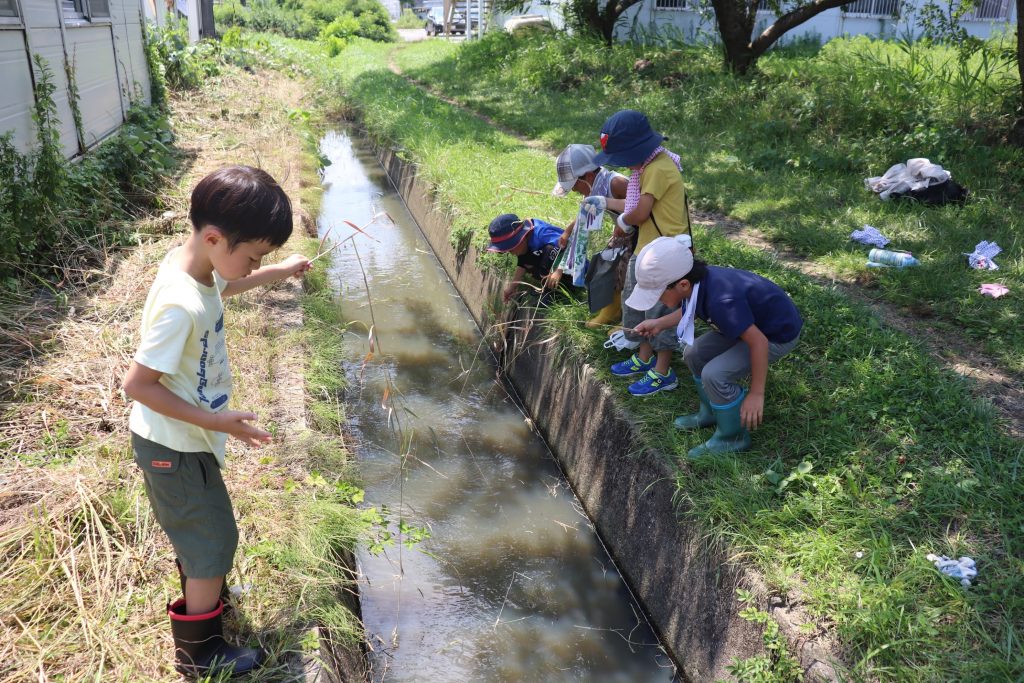
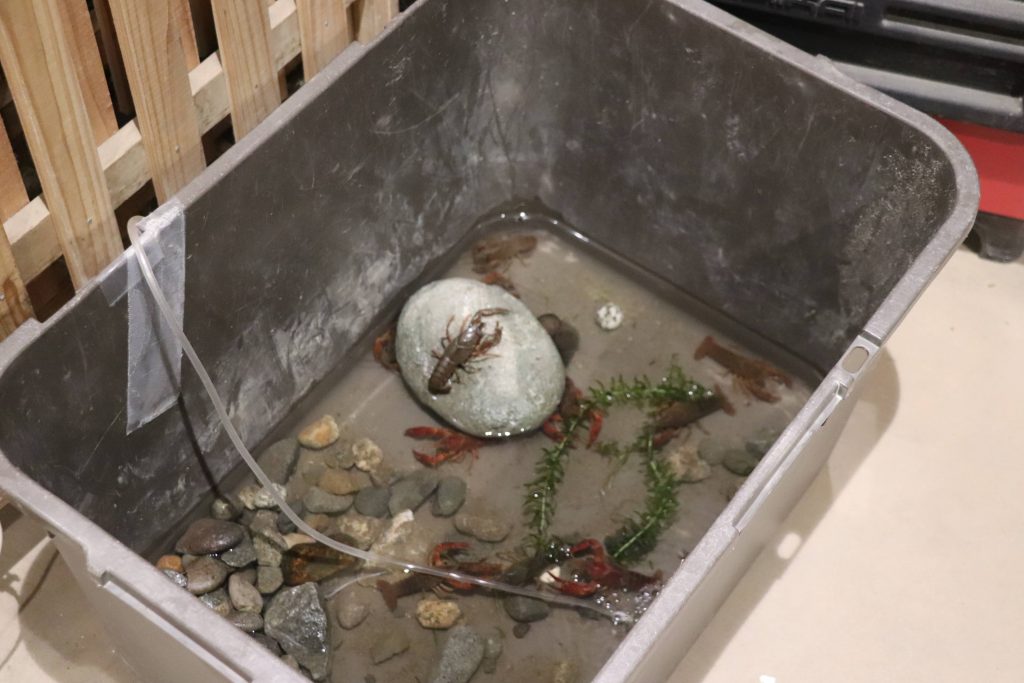
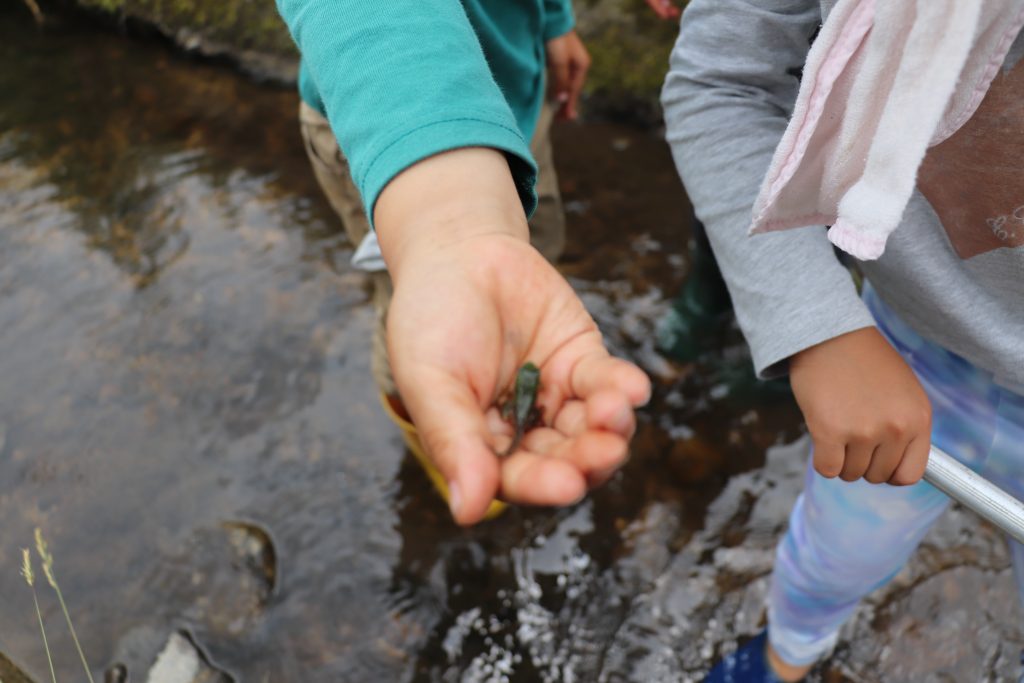
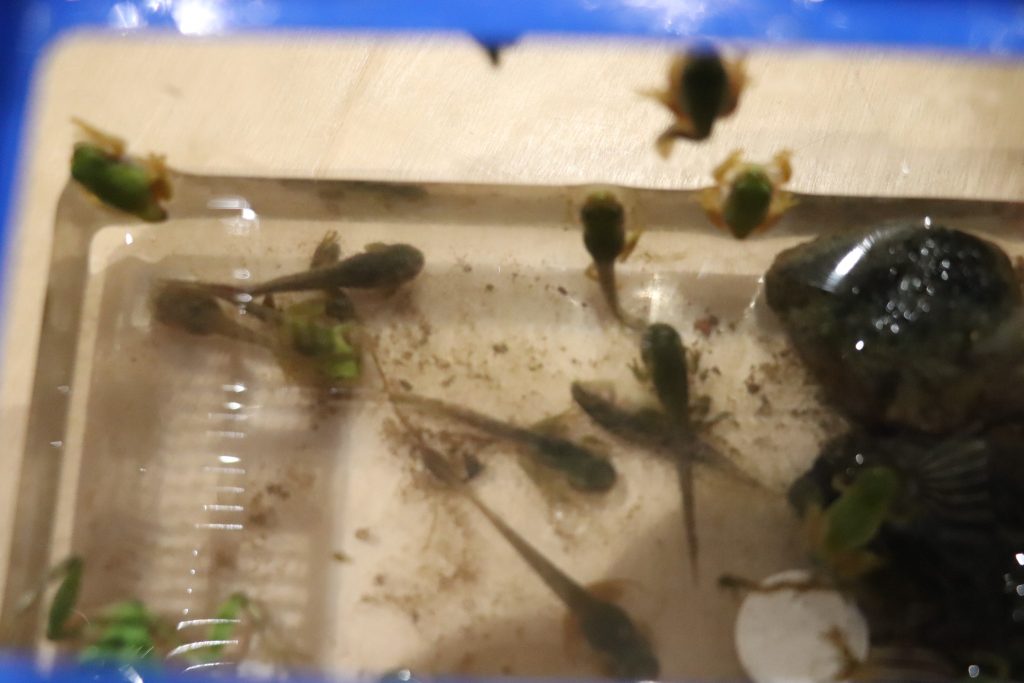
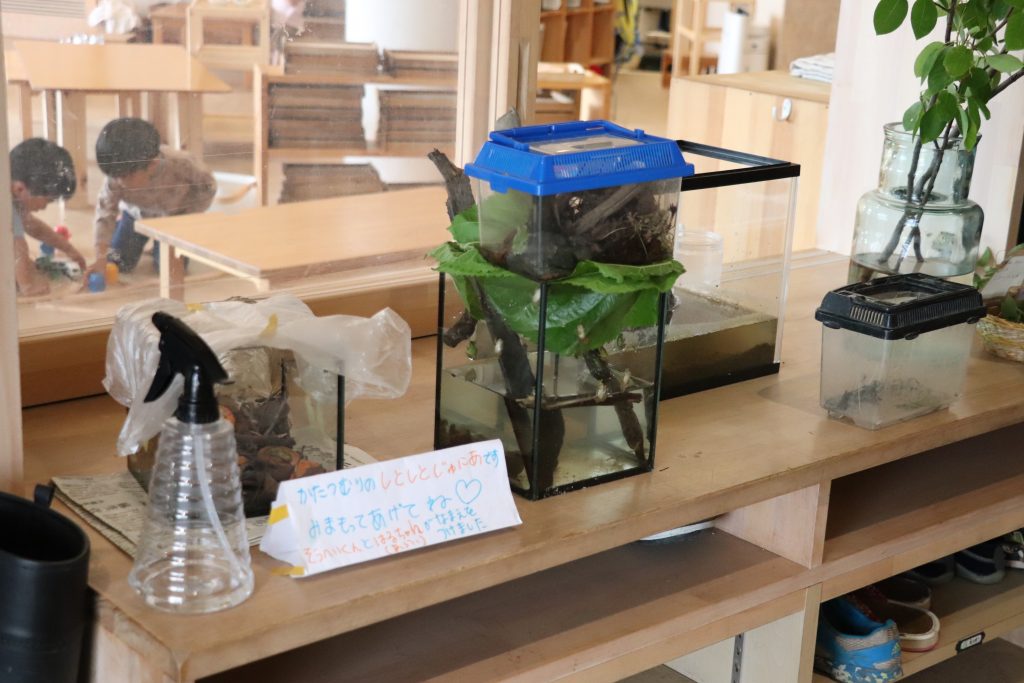
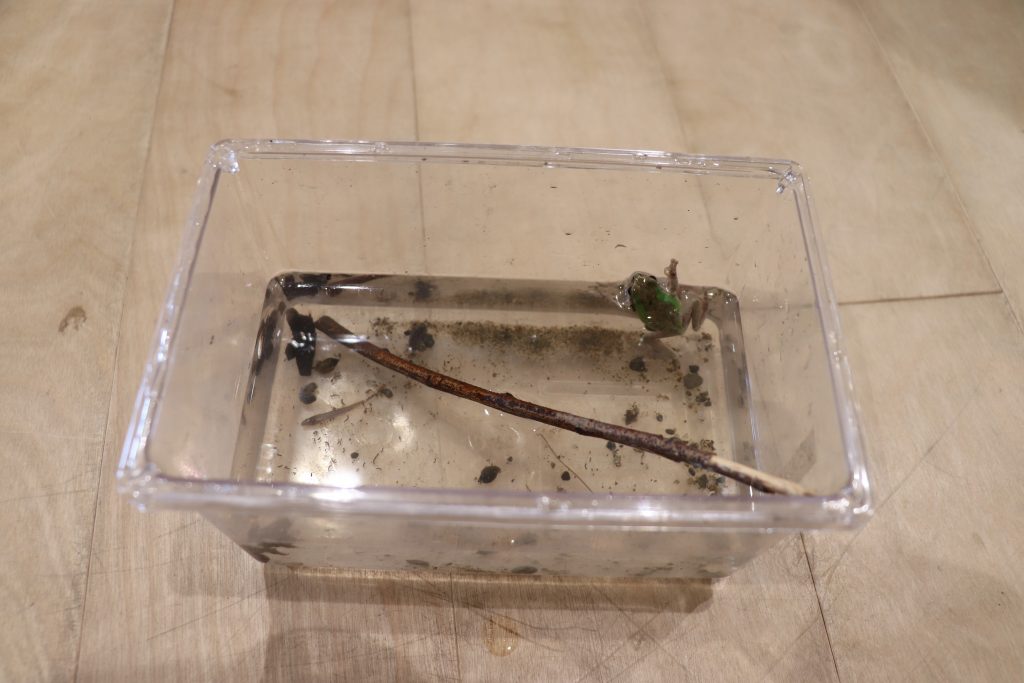
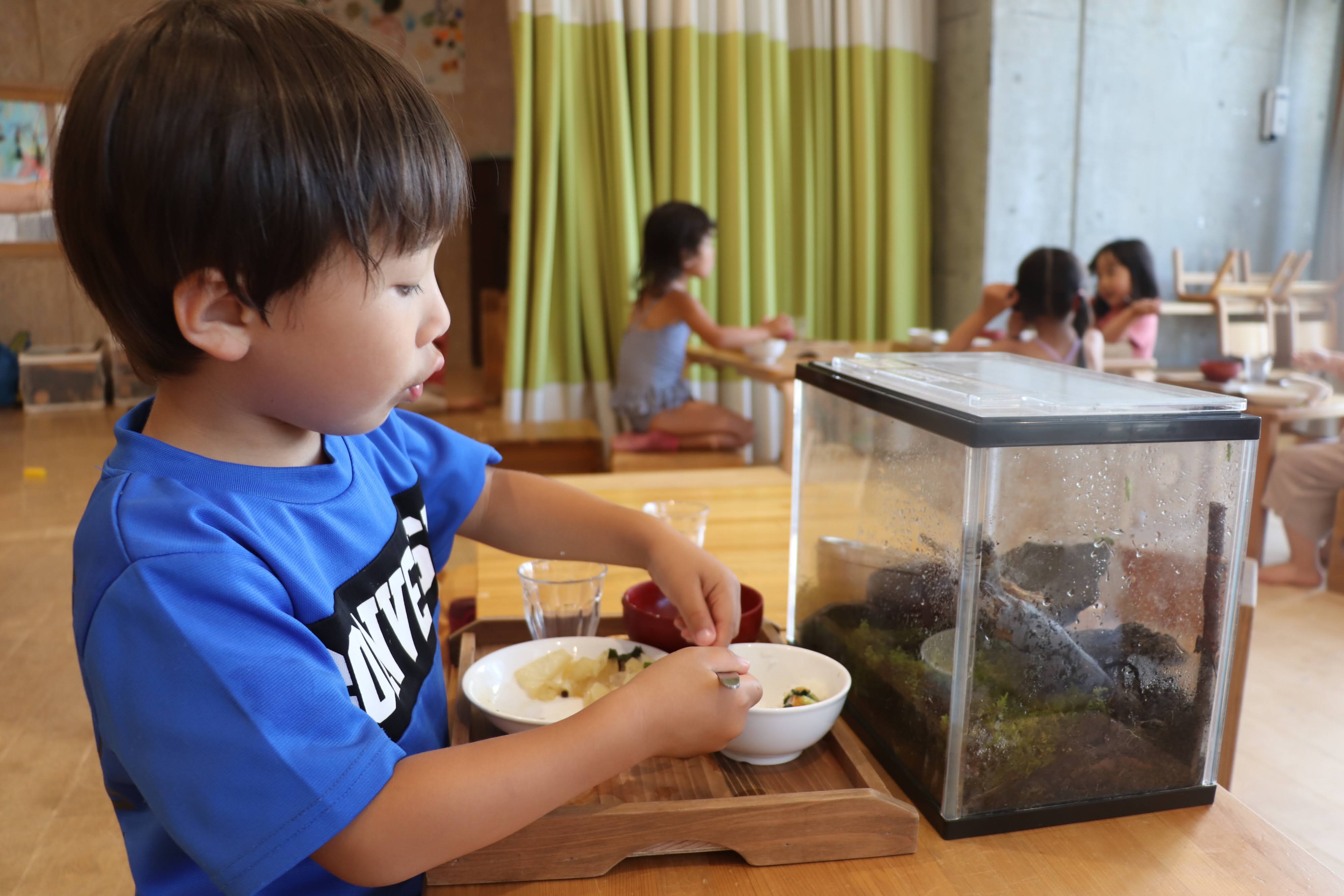
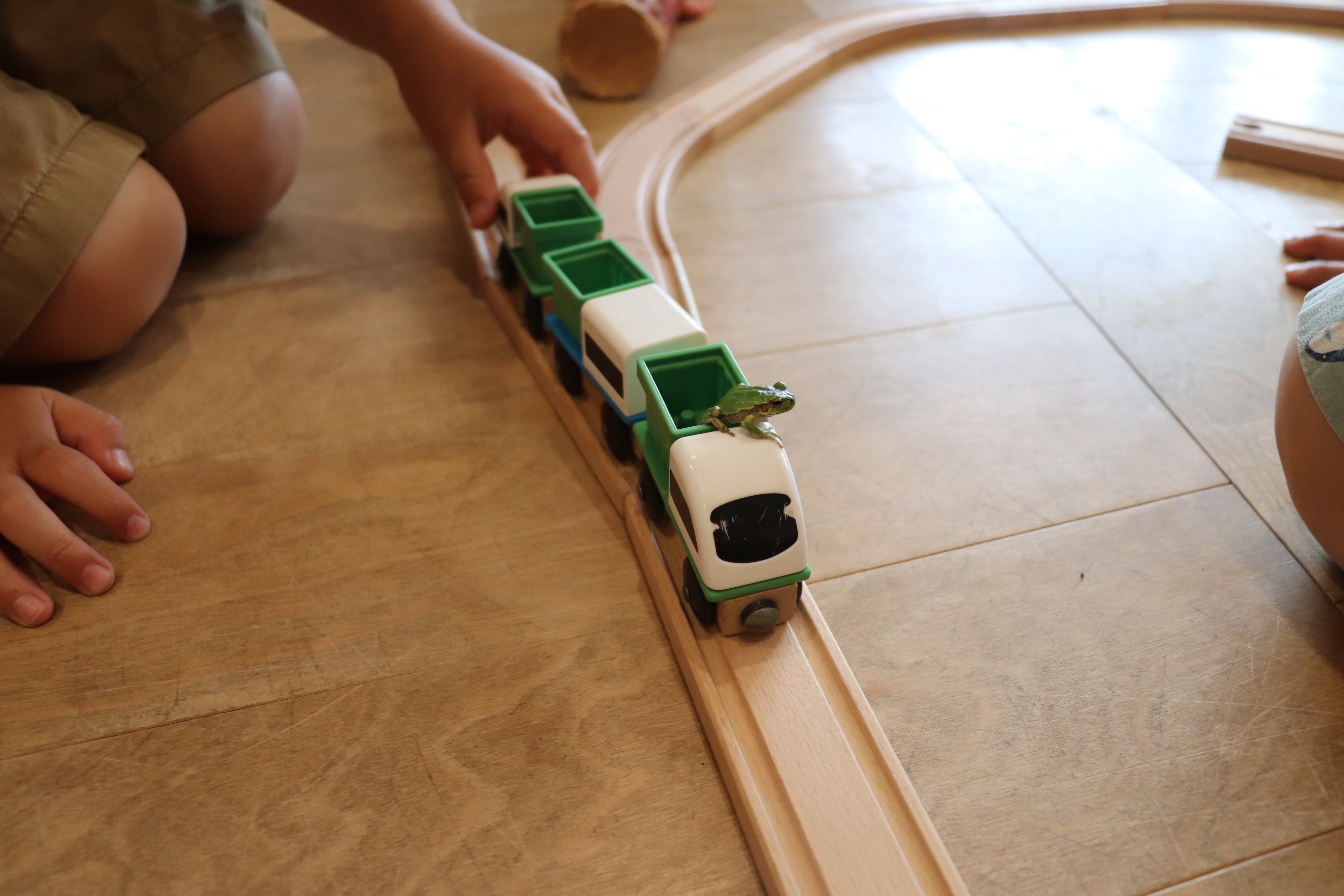
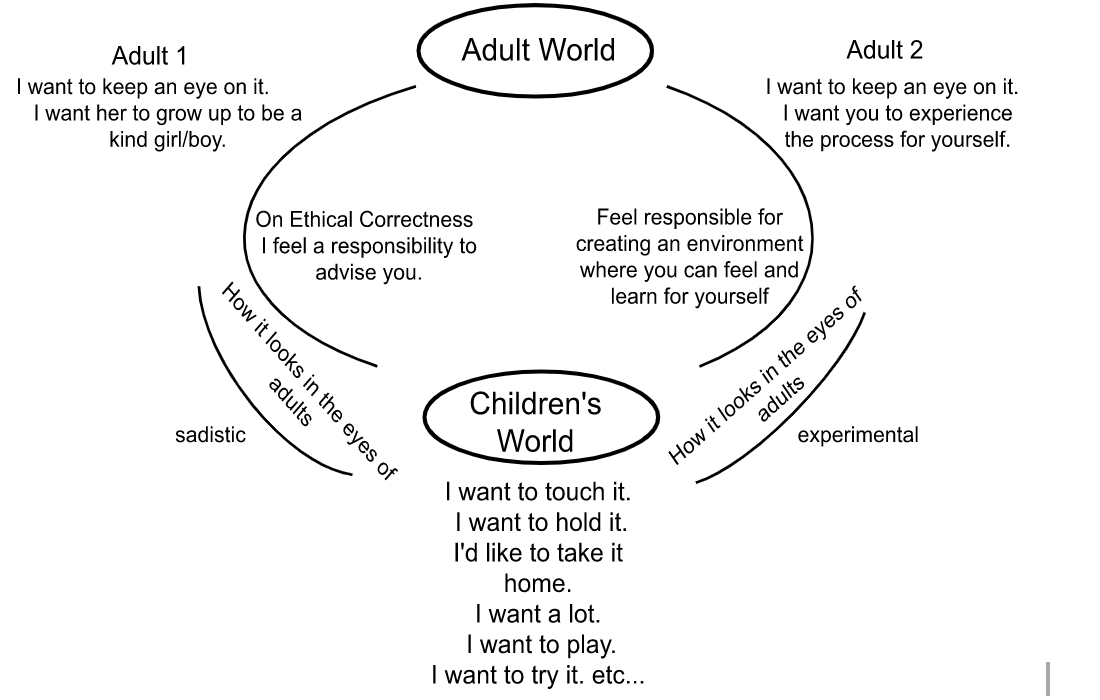
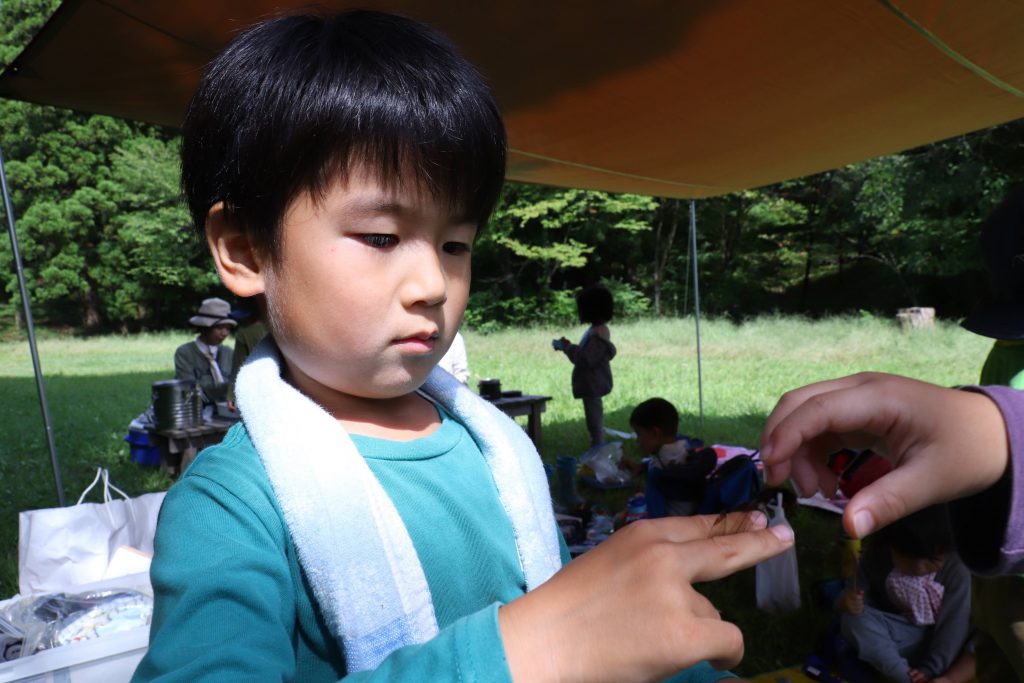
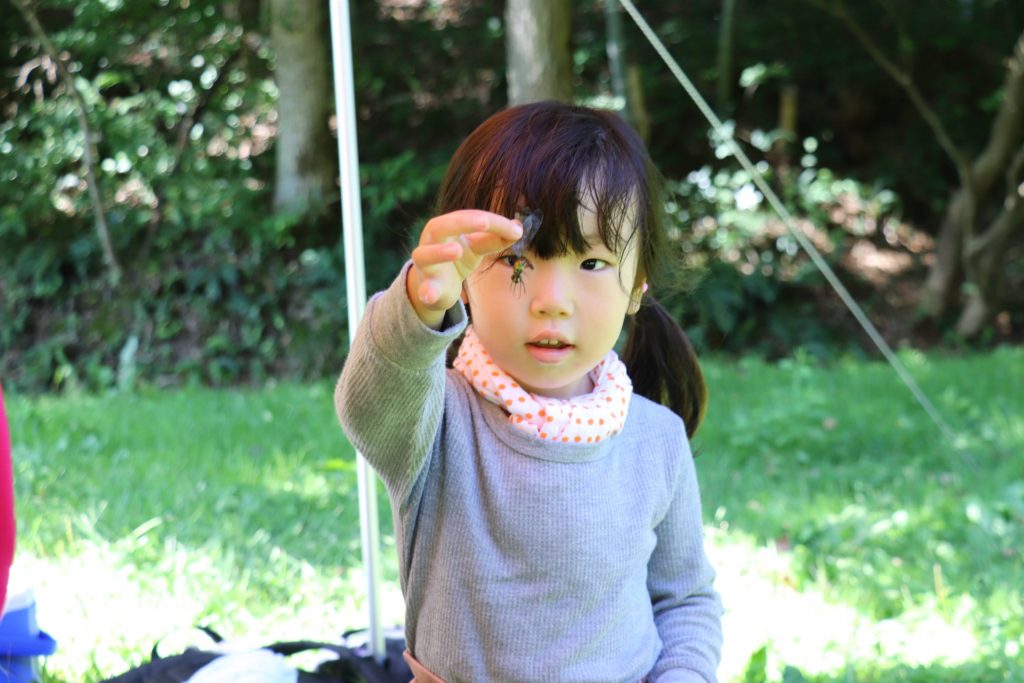
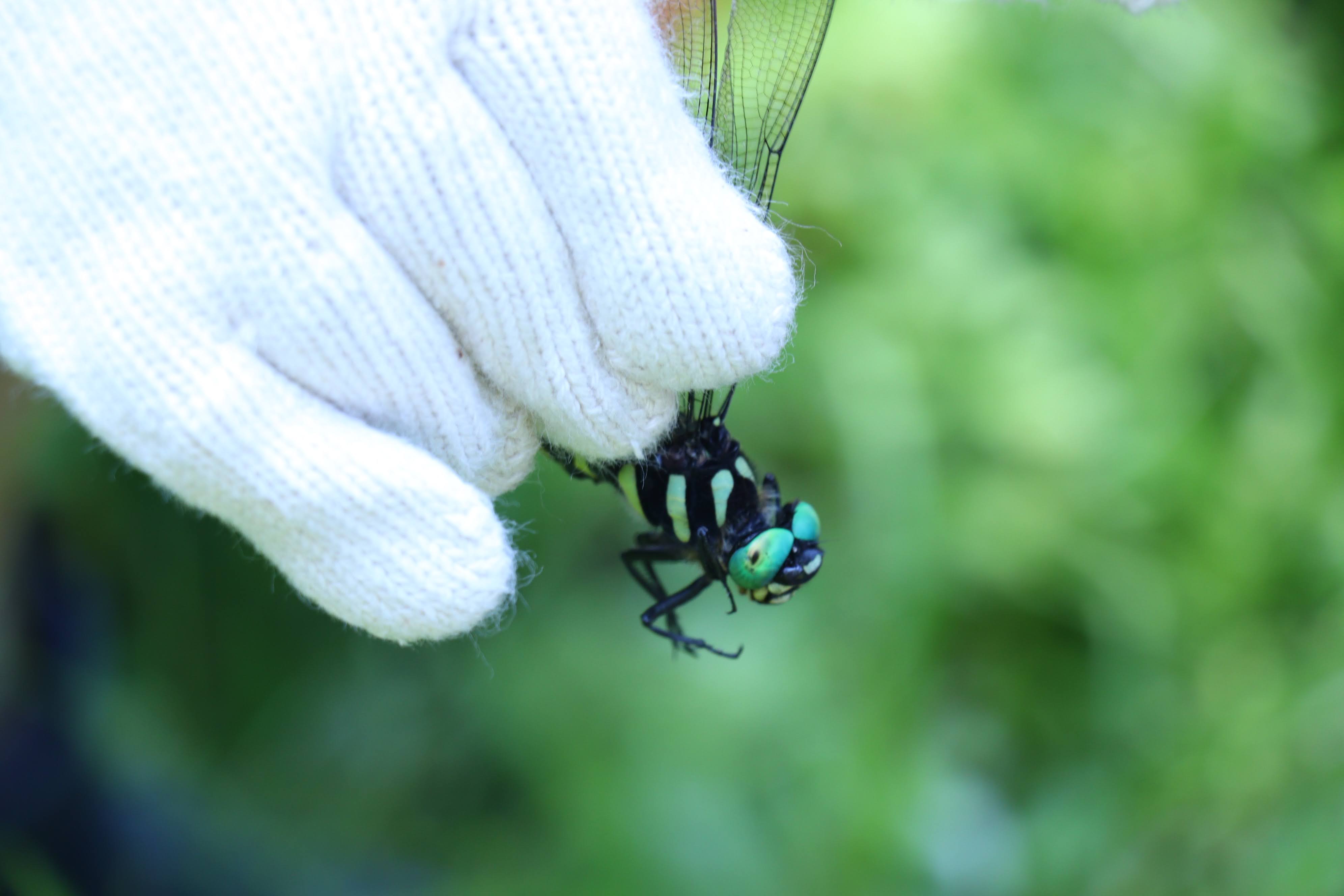
 PREV
PREV